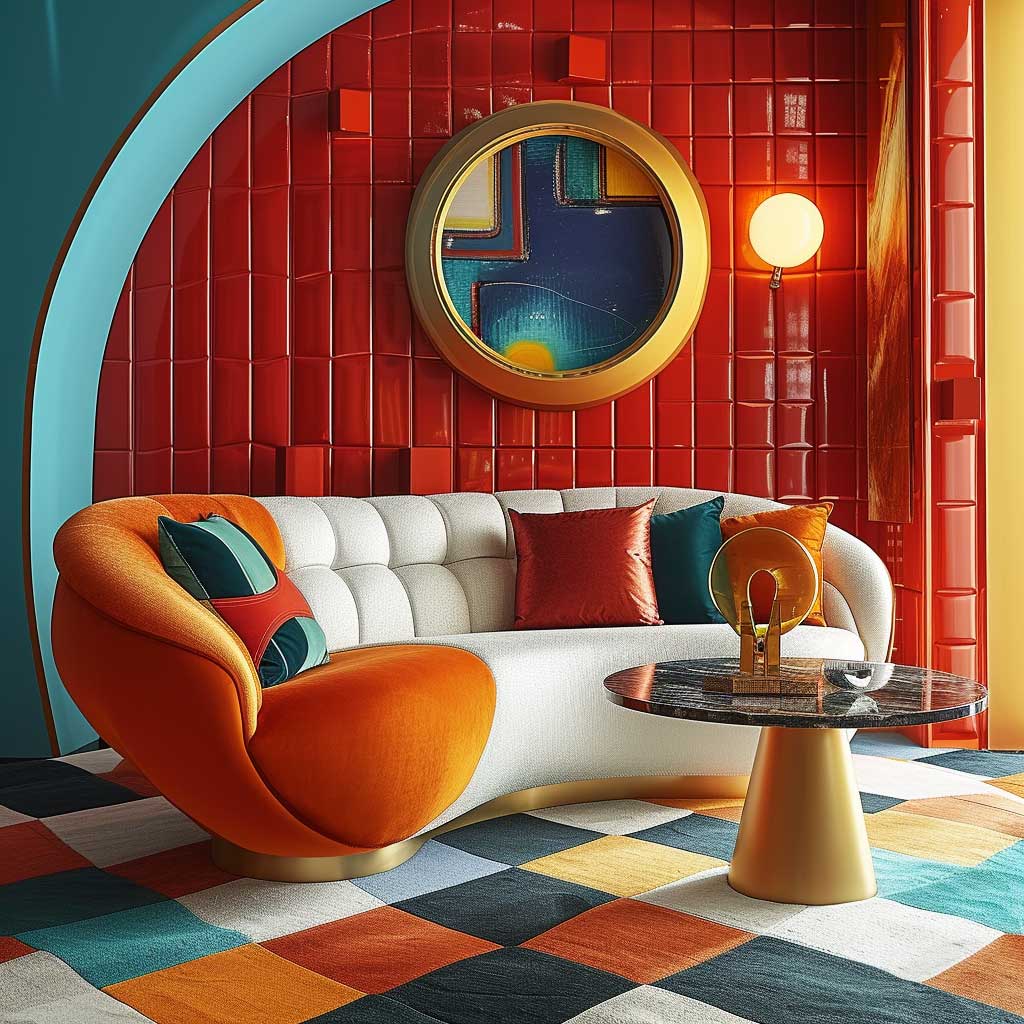Exploring Retro Interior Design: A Nostalgic Twist
Immerse yourself in the world of retro interior design, where nostalgia meets creativity. From vibrant color schemes to iconic furniture styles, this style brings a unique charm to modern spaces. Let's delve into the key elements and tips to incorporate retro design seamlessly into your home.
Overview of Retro Interior Design
Retro interior design refers to a style that takes inspiration from trends and elements of the past, typically from the mid-20th century. This design aesthetic often incorporates bold colors, geometric shapes, and sleek lines to create a nostalgic yet stylish look.
Key Characteristics of Retro Interior Design
- Use of vibrant colors such as avocado green, mustard yellow, and burnt orange.
- Integration of geometric patterns and bold, graphic prints.
- Furniture with clean lines and futuristic shapes, often made from materials like plastic, chrome, and wood.
- Inclusion of iconic design pieces from the 1950s, 60s, and 70s, like Eames chairs and sunburst mirrors.
Historical Influences on Retro Interior Design
Retro interior design is heavily influenced by the design movements of the mid-20th century, including mid-century modern, pop art, and art deco. These movements emphasized experimentation, innovation, and a departure from traditional design norms, leading to the distinctive style seen in retro interiors today.
Popularity of Retro Interior Design in Modern Times
In recent years, retro interior design has experienced a resurgence in popularity as people seek to infuse their spaces with nostalgia and personality. The timeless appeal of retro elements combined with a contemporary twist has made this style a favorite among interior designers and homeowners looking to create unique and eclectic spaces.
Elements of Retro Interior Design
Retro interior design is characterized by vibrant colors, sleek furniture styles, and bold patterns that evoke a sense of nostalgia for past eras.
Common Color Schemes
Common color schemes used in retro interior design include:
- Bright and bold hues such as avocado green, burnt orange, and mustard yellow.
- Pastel colors like baby blue, pink, and mint green.
- Contrasting color combinations like black and white, or red and turquoise.
Popular Furniture Styles
Retro interior design often features furniture styles that are sleek, geometric, and futuristic for their time. Some popular furniture styles include:
- Mid-century modern furniture with clean lines and tapered legs.
- Plastic or molded fiberglass chairs like the Eames chair.
- Shag carpets and bean bag chairs for a more casual and comfortable vibe.
Patterns and Textures
Patterns and textures play a significant role in retro interior design, adding depth and visual interest to a space. Some common patterns and textures include:
- Geometric patterns like chevron, polka dots, and stripes.
- Retro floral prints and psychedelic patterns for a groovy touch.
- Textured materials such as shag rugs, corduroy upholstery, and velvet curtains.
Incorporating Retro Design in Different Rooms

When it comes to incorporating retro design in different rooms of your home, there are various ways to add a touch of vintage charm to each space. Whether you want to create a cozy living room, a stylish bedroom, or a retro-inspired kitchen, there are plenty of ideas to help you achieve that nostalgic look.
Living Room Retro Design Tips
To bring retro flair to your living room, consider using bold colors, geometric patterns, and vintage furniture pieces. Opt for a statement piece like a retro-inspired sofa or armchair, and add accessories like vintage lamps, retro artwork, and shaggy rugs to complete the look.
Bedroom Retro Design Ideas
To infuse your bedroom with retro charm, focus on incorporating mid-century modern furniture, vibrant colors, and playful accents. Consider adding a retro-inspired headboard, a funky bedside table, and retro bedding to create a cozy and stylish retreat.
Kitchen and Dining Area Retro Elements
For the kitchen or dining area, you can add retro elements like colorful appliances, vintage-inspired lighting fixtures, and retro dinette sets. Consider using bold wallpaper, retro-inspired tiles, and vintage accessories to create a nostalgic yet functional space for cooking and dining.
Mixing Retro with Modern Design
When it comes to blending retro and modern interior design styles, the key is to find a balance that creates a cohesive and harmonious space. By incorporating elements from both eras thoughtfully, you can achieve a unique and stylish look that showcases the best of both worlds.
Importance of Balance
It is crucial to maintain a sense of balance when combining retro and modern elements in interior design. Too much of one style can overpower the other, resulting in a disjointed and cluttered space. By carefully selecting pieces that complement each other and paying attention to scale, color, and texture, you can create a space that feels cohesive and visually appealing.
Retro Accessories for Modern Spaces
- Statement Lighting: Retro-inspired pendant lights or sconces can add a touch of nostalgia to a modern space.
- Vintage Artwork: Incorporating retro artwork or posters can bring a pop of color and personality to a contemporary room.
- Mid-Century Furniture: Pieces like a sleek sideboard or a classic Eames chair can add a retro vibe to a modern living room or office.
- Patterned Rugs: A retro-inspired rug with bold geometric patterns can serve as a focal point in a minimalist room.
Last Point
In conclusion, retro interior design offers a timeless appeal that can transform any room into a stylish and inviting space. By blending retro elements with modern design, you can create a truly eclectic and personalized environment that reflects your unique taste.
Embrace the retro vibe and infuse your living spaces with a touch of vintage flair.